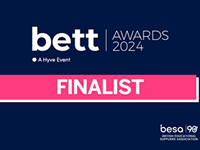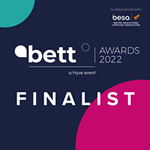This download provides you with a zip file which contains all the resources you will need to deliver this topic.
It includes:
- Student Learning Record (A3 version in word)
Student Learning Record (PDF version)
Student Learning Record (PowerPoint version)
Set of student activities and workshops with answers
Answers to the exam questions from the back of the SLR
Teacher Marking Checklist
Year 13 Recap Lesson
This topic covers:
H446
- 2.3.1 a-f Algorithms
Specific knowledge required for A Level:
- Candidates need to be able to write algorithms using flow charts, pseudocode and program code.
- Candidates need to be able to follow the code as shown in the OCR pseudocode guide, but are not expected to write code in syntax.
- Candidates’ code is not expected to be syntactically perfect, but must use appropriate structures and techniques.
- Candidates need to understand that there are a range of possible solutions to a task, and that these algorithms may be different in respect to their execution time and the amount of memory they make use of.
- Candidates need to be able to compare different algorithms for a given data set and demonstrate an understanding of which is more efficient in terms of speed and/or memory.
- Candidates need to be able to compare the use of one or more algorithms against several different data sets, to determine how they will differ in their use of memory and speed of execution.
- Candidates need to understand how the efficiency of an algorithm is measured using Big O notation.
- Candidates need to understand the meaning of constant, linear, polynomial, exponential and logarithmic complexity. They need to be able to recognise and draw each of these complexities of using a graph and be able to read and write the notation.
- Candidates need to know the best and worst case complexities for the searching and sorting methods.
- Candidates need to understand the difference between best case, average case and worst case complexities and how and why these can differ for an algorithm. Candidates need to have an understanding of the situations where queues, stacks, trees etc. can be used and be able to recommend and justify their use In specific scenarios or programs.
- Candidates need to have an understanding of a stack as a dynamic data structure.
- Candidates need to understand how a stack can be implemented using a different data structure, such as a static array.
- Candidates need to have an understanding of a tree structure, both binary and multi branch trees.
- Candidates need to be able to add and remove data to/from a tree.
- Candidates need to be able to read, trace and write code to implement a tree structure (including adding and removing items).
- Candidates need to understand how a tree can be implemented using a different data structure, such as a linked list.
- Candidates need to understand why and how trees are traversed.
- Candidates need to understand how a depth-first (post-order) traversal works, and be able to perform the traversal on a tree.
- Candidates need to be able to read, trace and write code for a post-order traversal.
- Candidates need to understand how a breadth-first traversal works, and be able to perform the search on a tree.
- Candidates need to be able to read, trace and write code for a breadth-first traversal on a tree.






